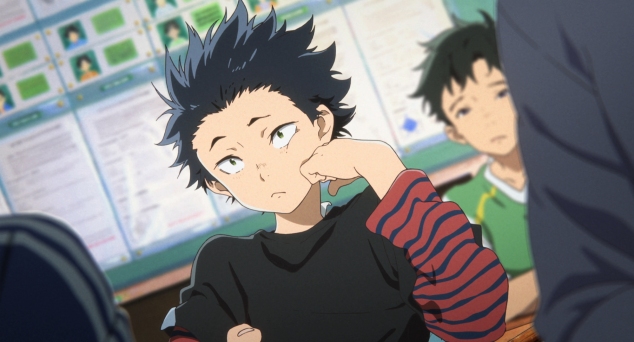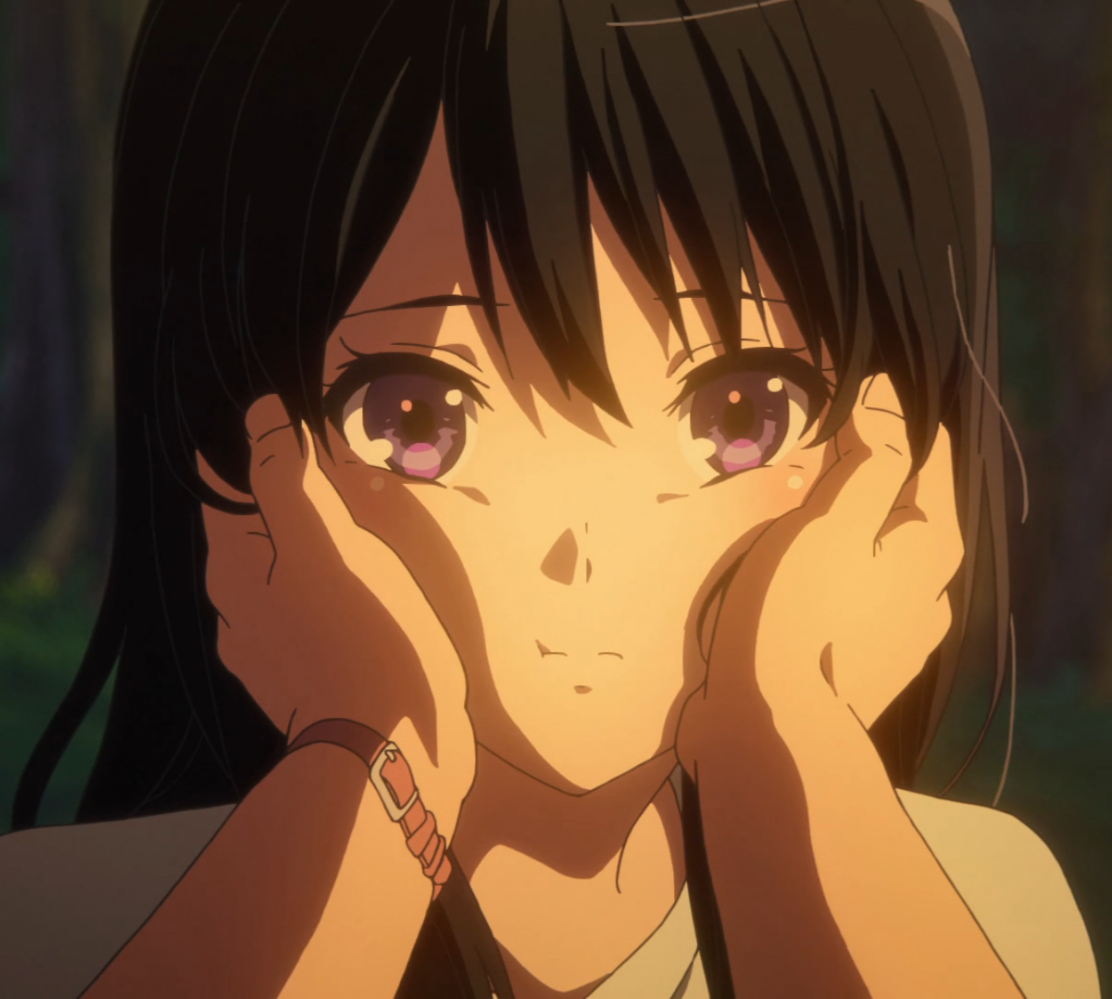
I just watched Koe no Katachi last night…
And what a special night that was. Nothing less than phenomenal, Kyoani truly outdid themselves when it comes to this immaculate piece of art. I’m having trouble putting all these thoughts and emotions swirling around in my brain into even semi-coherence, and I’m pretty certain it will take more time and more re-watches for me to truly understand this outstanding film. So, for now, I just want to focus on…well, focus: the imaginary camera lens work of Koe no Katachi.

Kyoani clearly has a profound dedication to realism when it comes to their cinematography. This film in particular takes great strides in utilizing depth of field. There are SO MANY sensational camera techniques used in Koe no Katachi, techniques that are so often not even thought about when it comes to animation. Creating the sense of three-dimensional space while staying true to the more desirable visuals of 2D animation is incredibly impressive, yet also a colossal undertaking that relies on an insane amount of time, effort, and pure skill to accomplish. It is important to understand how insane of a production this is, to comprehend the merit of this film, or at the very least to discern why it is that this movie appears to be so visually appealing.
Back to the camera work at hand, Koe no Katachi exudes a care for image focus, the likes of which I have never seen before in animation. Now, before we go any further, let me drop some film terminology for all the non-film students reading this right now (I’m not trying to come off as bragging, by the way. I’m pretty much a novice right now, and these are some pretty basic terms). A rack focus is when the focus of the camera changes during a shot [example of rack focus]. In this film, rack focuses are heavily used, starting from the very beginning when we see shifts of focus between the lead in young Ishida’s mechanical pencil to young Ueno, staring as she sits beside him. Situations like these, I believe, are portraying the main characters’ focuses, and lack thereof, which define their personalities and symbolize their flaws as human beings. But let me get through the other types of shots being used in this film before I continue on this central theme.

Lens blurring seems to persist throughout the movie, whether the shot has a rack focus or not. One of the reasons I really want to watch this film again is to determine the differences between the lens blurring during the childhood portions and the lens blurring in the characters current high school period of life. There’s just this general lens blur around the frame of most every shot in the film, and I may just be imagining this, but I feel the blur in the shots during the past are slightly more prominent, as if to illustrate the haziness of childhood memories. [Afterthought – I just realized I didn’t even mention the fact that there’s always something out of focus in every shot. Depth of field is really important!]
Then there’s zollies. FUCKING ZOLLIES. I literally started tearing up when I saw it, because I’ve never seen this in any animation, ever. I even recall myself sniffling as I whispered under my breathe “this is so coooool”. A zolly is a type of shot where the camera is physically moved backwards (or dollied) while at the same time the camera lens is being zoomed in, and it produces a really awesome effect [example of zolly]. It’s a technique that can often seem like a cheesy trick to emanate a moment in an overly dramatic fashion. That being said, used with strong purpose and excellent technical precision, a zolly can be seen as truly breathtaking, and was seen indeed seen as truly breathtaking, by me, no less than three times in Koe no Katachi.

Aside from being FUCKING COOL to look at, these camera techniques play into what I believe to be the core themes of the film: The inability to focus on what is real and what is not, what is right and what is wrong. Focalism is a term in psychology for a type of cognitive bias. Also known as anchoring bias, it stands for the tendency that humans have to rely too heavily on the first piece of information offered (the “anchor”) when making decisions. In Koe no Katachi, this is seen when young Ishida is influenced by his childhood friends, leading him to bully Shouko based solely on the knowledge that it’ll entertain his friends, despite the pain it would inevitably cause her. By focusing only one thing, Ishida fails to notice the others that might’ve led him to make better decisions, and lead him to realize sooner that what he had been doing was wrong, and that his friendships were not as real as he had hoped.
What is real and what is not—Ishida begins to find this, 15 years after his terrible mistake, starting with his and Nagatsuka’s blossoming friendship. He even asks Nagatsuka about what it means to be friends, a dialogue that makes it clear what is now on Ishida’s mind. His friend group grows steadily throughout the film, and before he knows it, Ishida finds himself enjoying life with friends for the first time since those days, at an amusement park no less! And then he falls into the same trap he did back then. There’s still something he’s not seeing. Something that he cannot get into focus. And that something will yet again break apart everything he had tried so desperately to build.

I’ll leave it at that for now. Koe no Katachi is something that I can tell will be on my mind for quite a while, so don’t be surprised if I continue to write about it for a long time. Until that next post, I want to leave you with two more things. First, I want to urge you to watch his movie, if for some reason you read through this without having seen it. I don’t do recommendations very often, but I feel this movie is a certain type of special, a film that no one should miss out on. The second thing I wanted to do was of course, thank you for reading. See ya next time.
